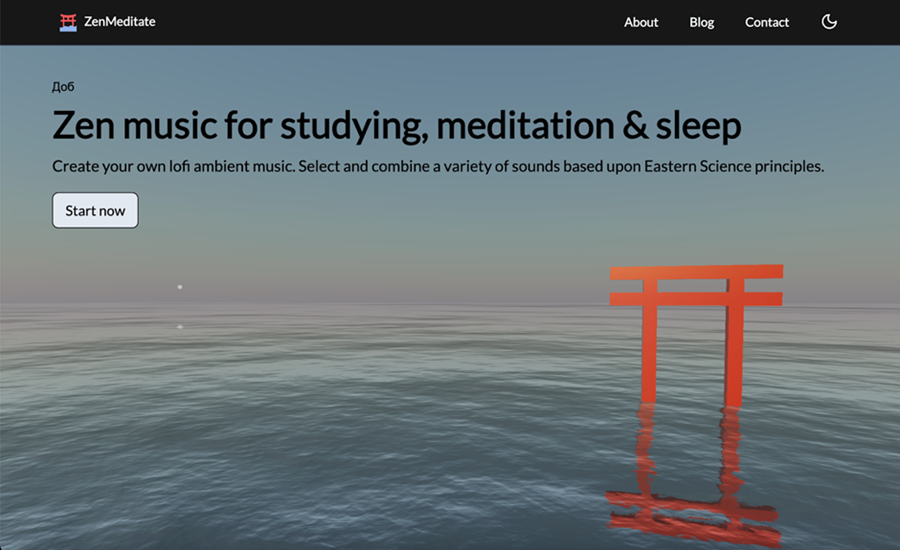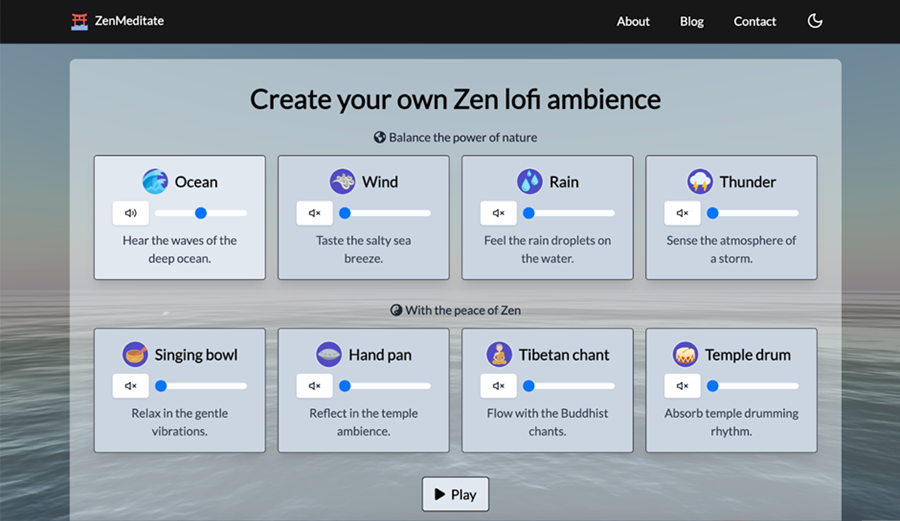Zen Meditate

In the fast-paced modern world, finding inner peace and enhancing concentration can be a challenge. Meditation, a practice rooted in ancient traditions, offers a pathway to tranquility and focus that’s why discovering ZenMeditate was such a game changer for me.
Eastern music, with its rich heritage and unique instruments, plays a pivotal role in augmenting this meditative journey. For thousands of years has been used by monks and spiritual leaders to guide them in meditation.
Natural sounds also play an important role in helping with enhancing meditation and focus. There is a reason why many Buddhist temples are built next to the ocean, flowing rivers or in the forest amongst the lively background noise of the forrest.
When combined in a complimentary rhythm and volume they can produce a harmony which can take your meditation to the next level. The can be achieved by carefully balancing the power and force of nature with the peace and serenity of Zen instruments. Here are ten ways Eastern music can be used to enhance meditation and focus:
1. Singing Bowls: Harmonizing the Mind
Singing bowls, often used in Tibetan traditions, produce resonating sounds that promote deep relaxation. The harmonic overtones of these bowls create a sense of balance, helping to align and clear the mind, making them ideal for beginning a meditation session.
2. Hand Pan: Melodic Focus
The hand pan, with its soothing and melodious tones, offers a rhythmic and calming influence. Its sound can help in maintaining focus during meditation, guiding the mind away from distractions and towards a state of deep concentration.
3. Buddhist Chanting: Spiritual Connection
Buddhist chanting, a practice rich in spiritual history, helps in fostering a deep connection with the inner self. Chants such as the famous “Om Mani Padme Hum” can be used to enhance focus and bring about a sense of peace and spiritual awareness.
4. Temple Bells: Clarity and Awakening
The clear and penetrating sound of temple bells is used to signify the start and end of meditation sessions. Their tones are believed to purify the mind and awaken the spirit, providing clarity and enhancing mindfulness.
5. Drumming: Rhythmic Grounding
Drumming, especially in Zen traditions, provides a rhythmic grounding. It can be used to mark the passage of time during meditation, helping practitioners maintain a steady pace and stay present in the moment.

6. Water Flowing: Natural Serenity
Incorporating the sound of water flowing into meditation creates a naturally serene environment. This sound promotes relaxation, reduces stress, and enhances the ability to concentrate.
7. Rain Sounds: Refreshing the Mind
The gentle patter of rain is known for its soothing qualities. It can help in refreshing the mind, washing away mental clutter, and enhancing the depth of meditation.
8. Wind Chimes: Subtle Guidance
The soft, unpredictable melody of wind chimes acts as a gentle guide during meditation. Their random notes can help in bringing the mind back to focus whenever it wanders.
9. Thunder: Power and Release
Thunder sounds, while more intense, can be powerful in meditation. They symbolize the release of tension and the powerful forces of nature, helping to release deep-seated emotions and stress.
10. Balancing with Silence
Amidst these sounds, it’s important to balance them with periods of silence. Silence allows for the absorption of the sounds’ benefits and provides space for inner reflection.
In conclusion, Eastern music and natural sounds offer a rich tapestry of auditory experiences that can significantly enhance meditation and focus. By incorporating these elements, one can create a perfect ambiance for a deep and fulfilling meditative practice. If you would be interested to learn more about the use of Eastern instrments to enhance your meditation then do check out the free meditation tools at ZenMeditate where you can create your own perfect Zen sound mix.




